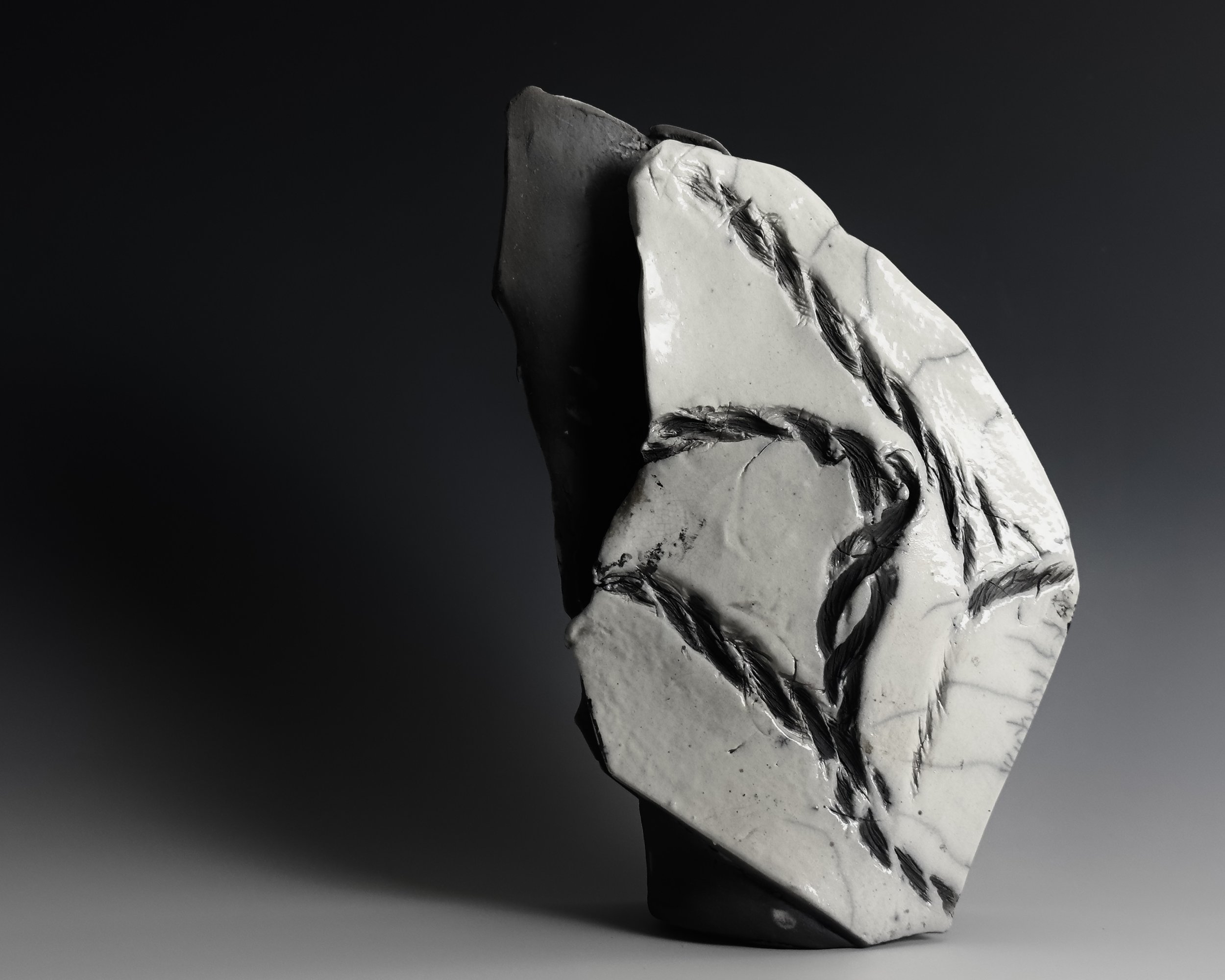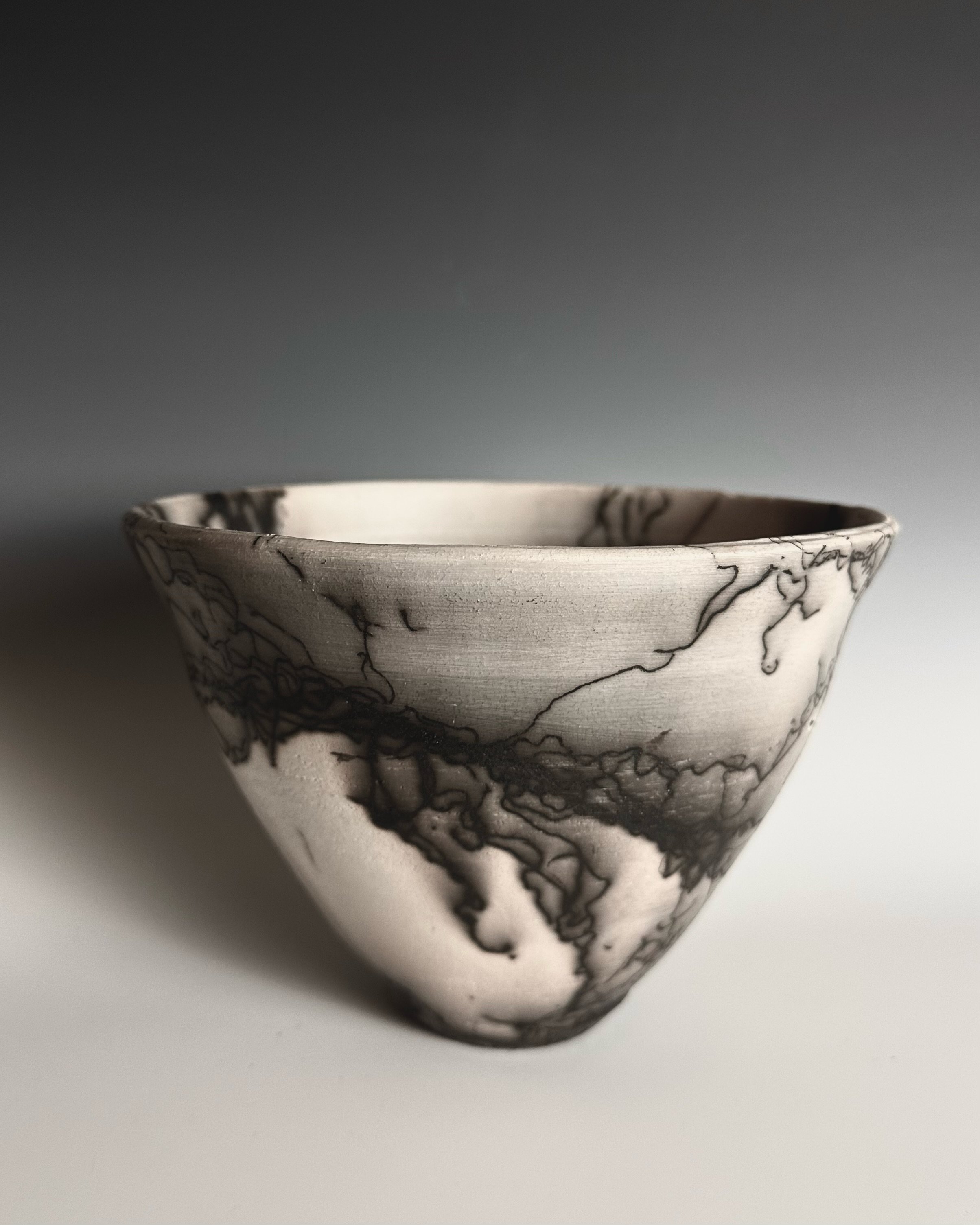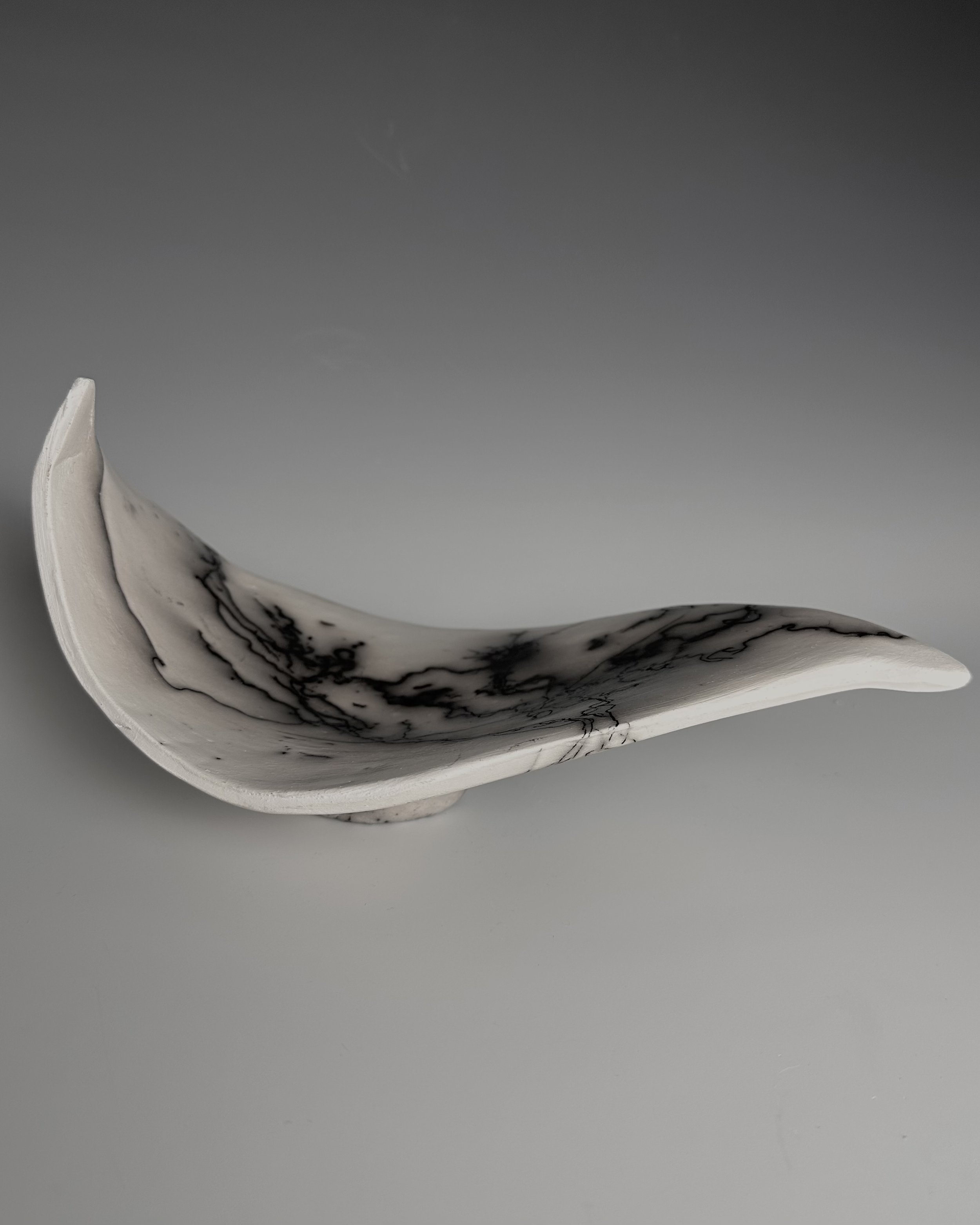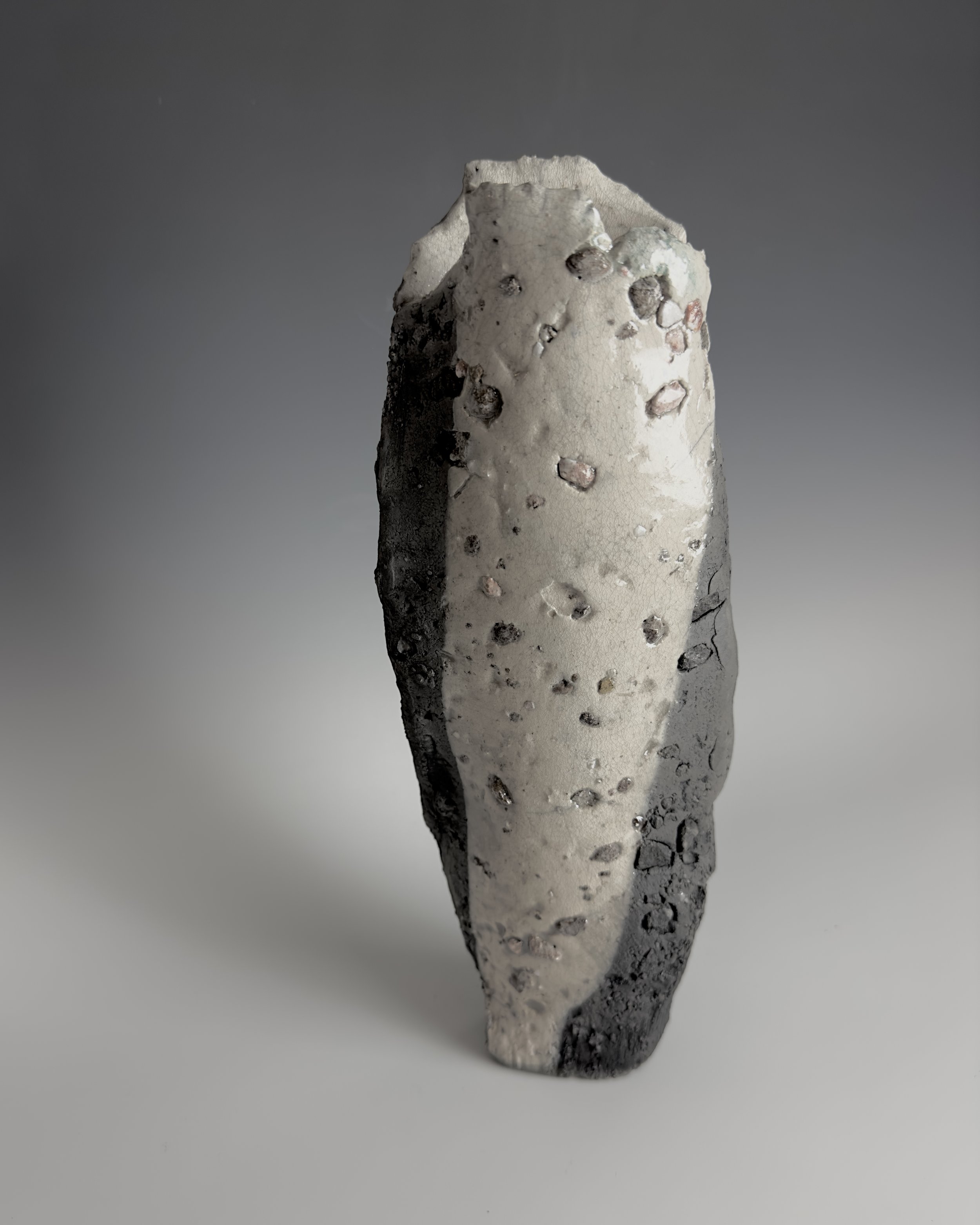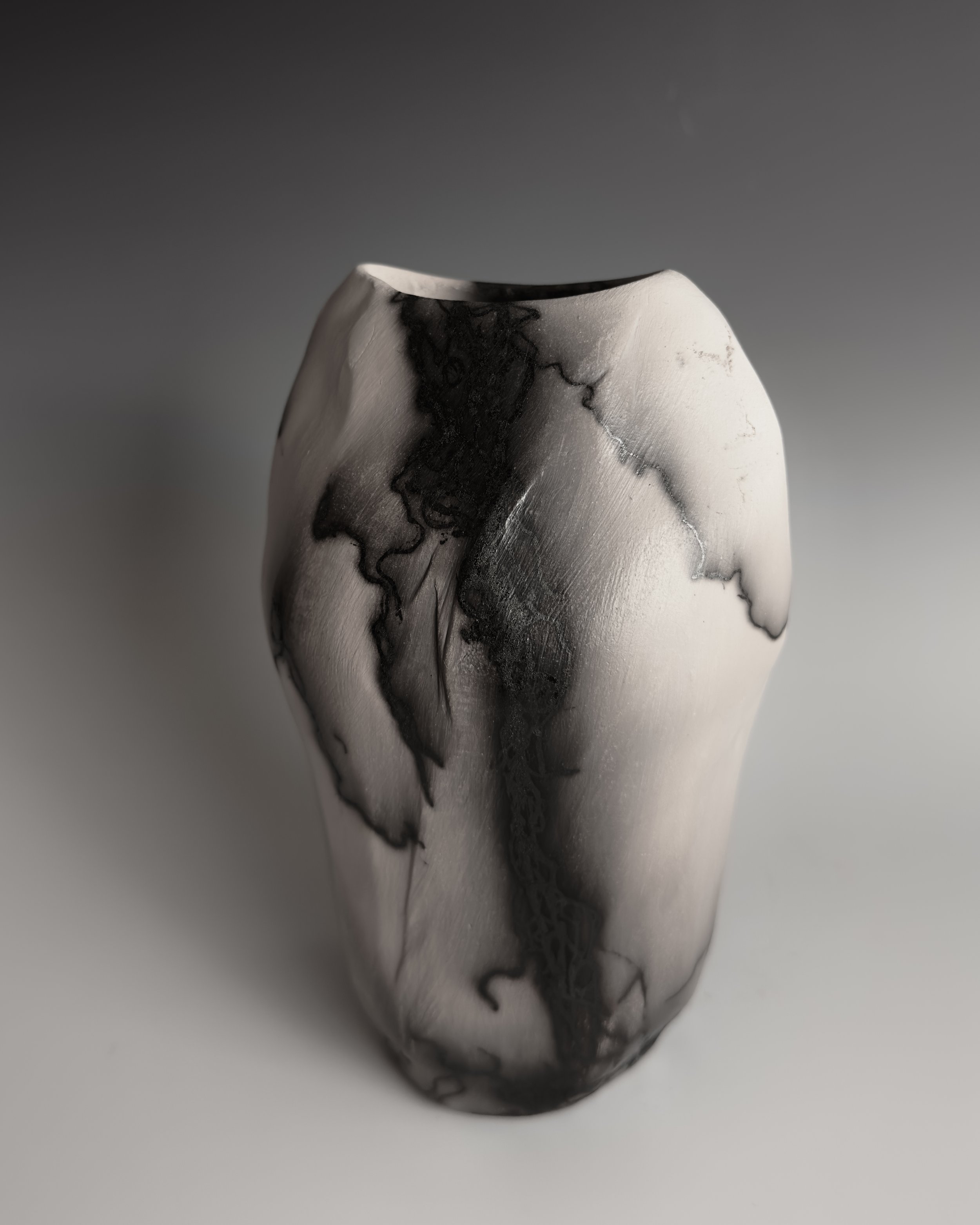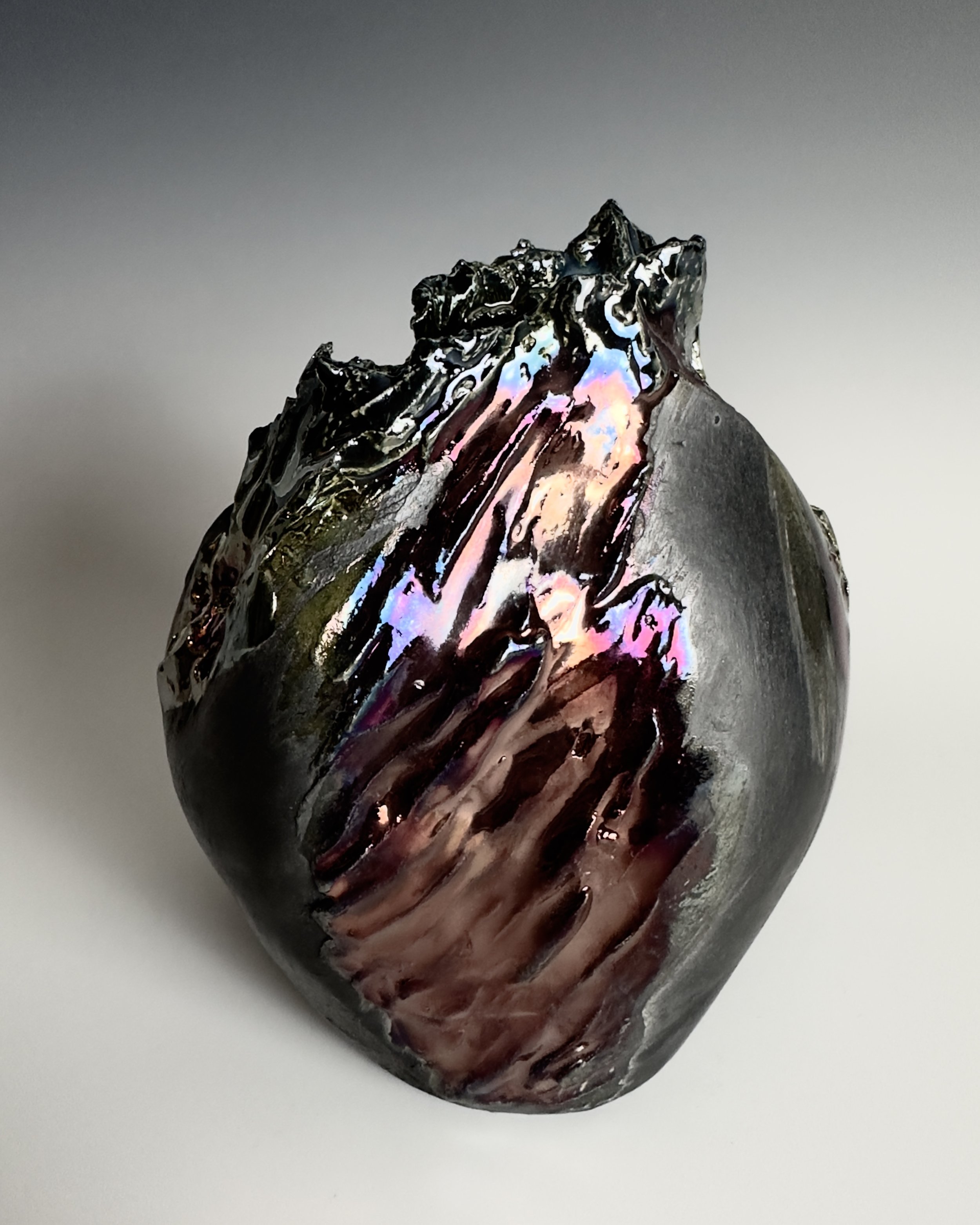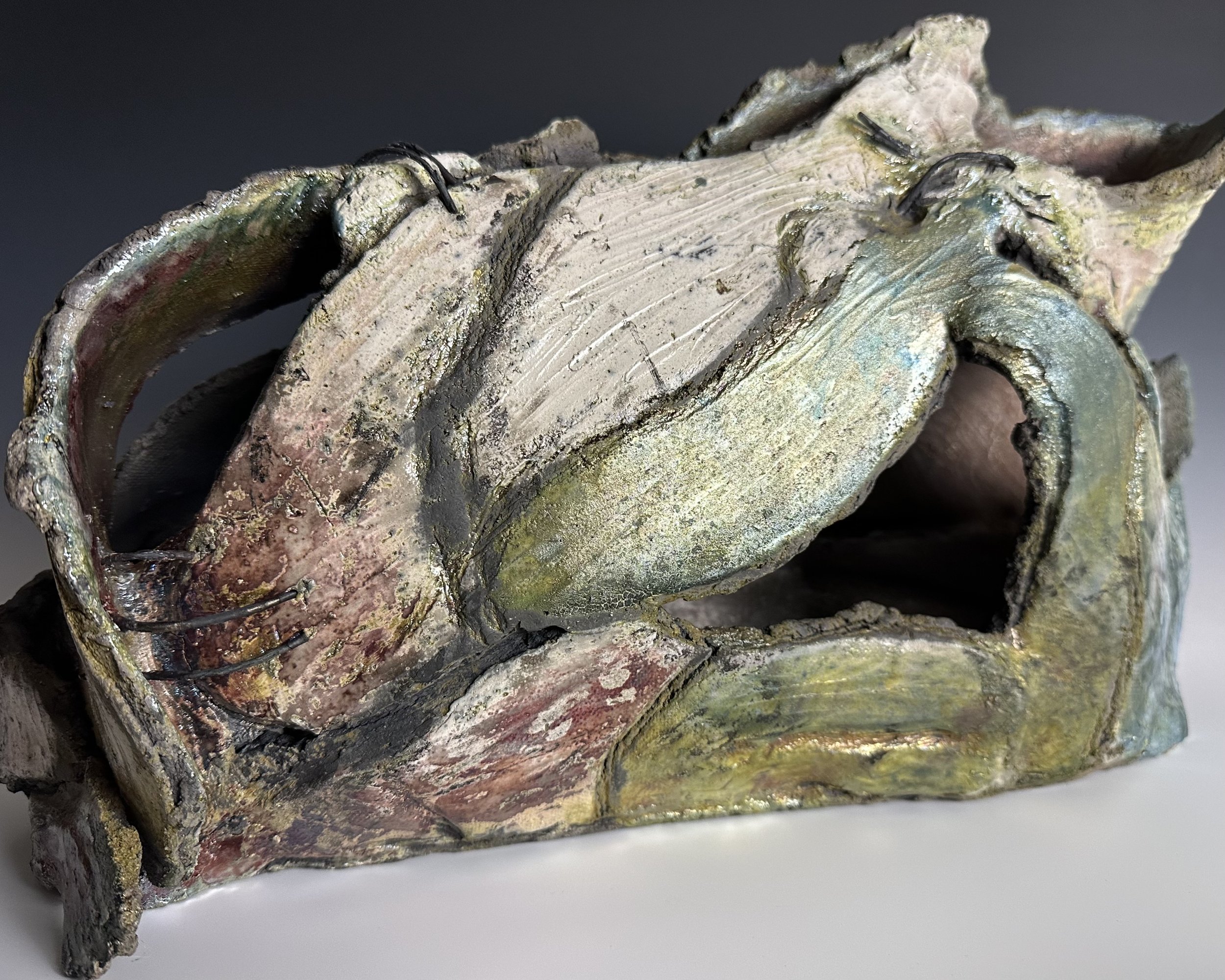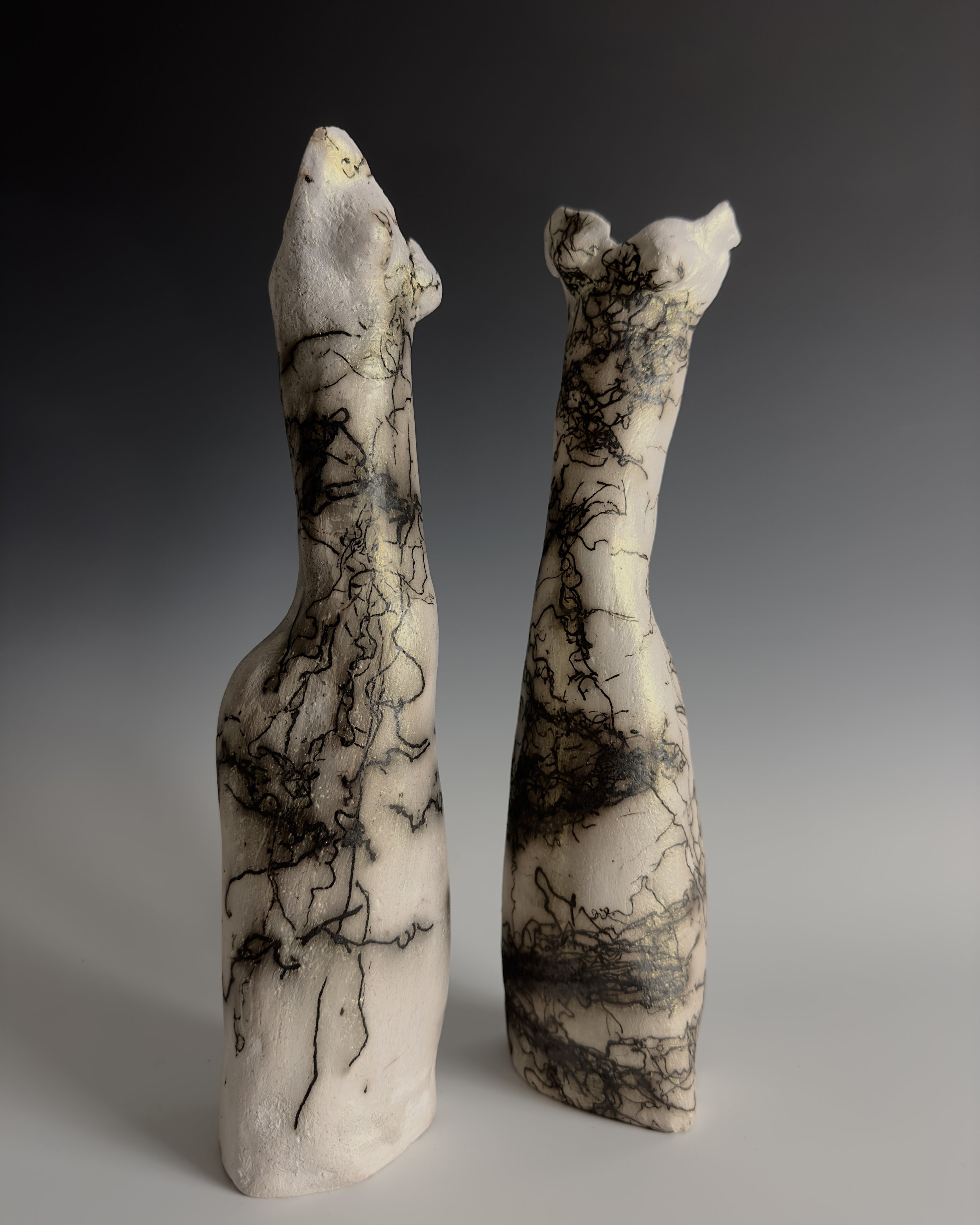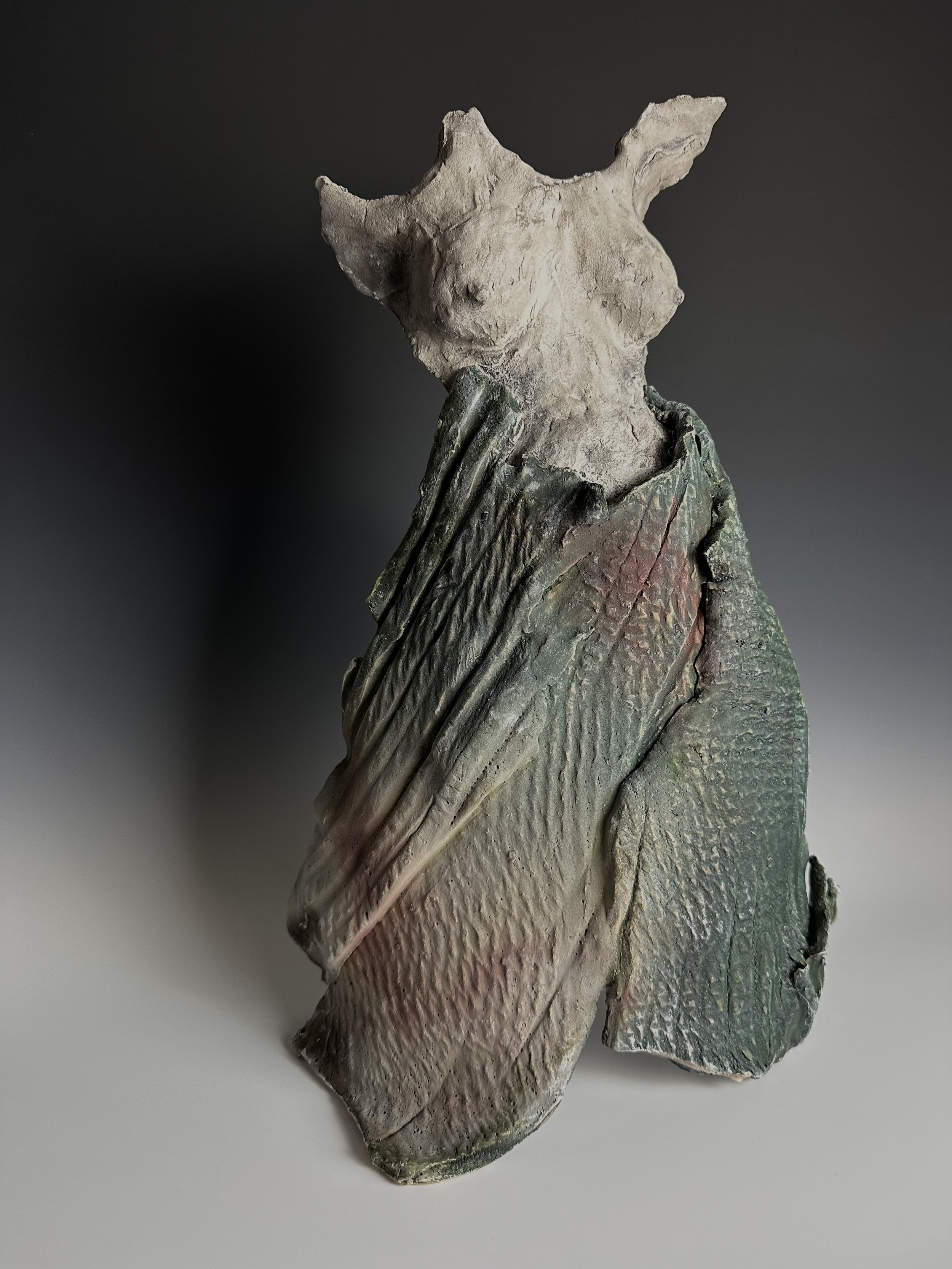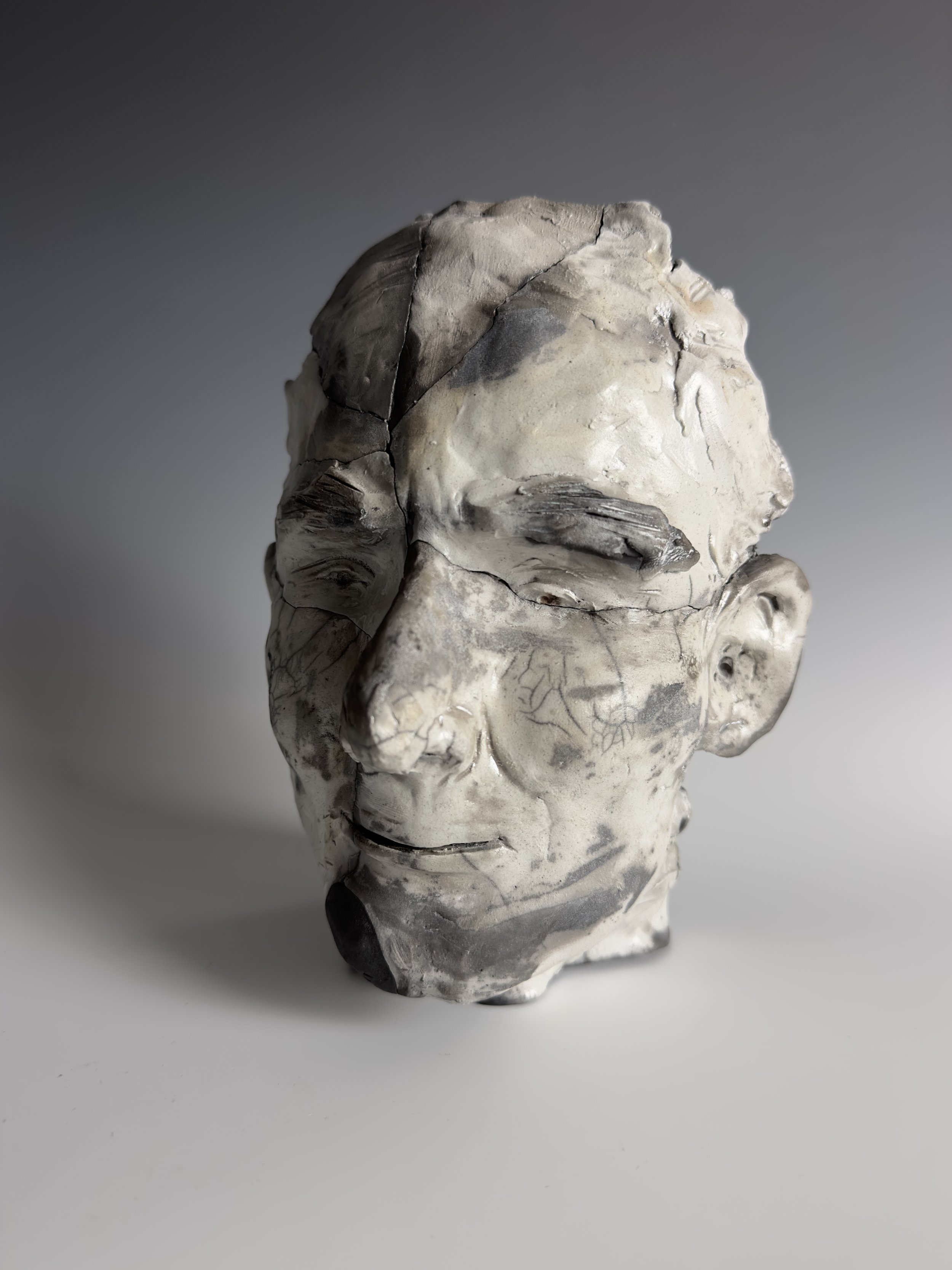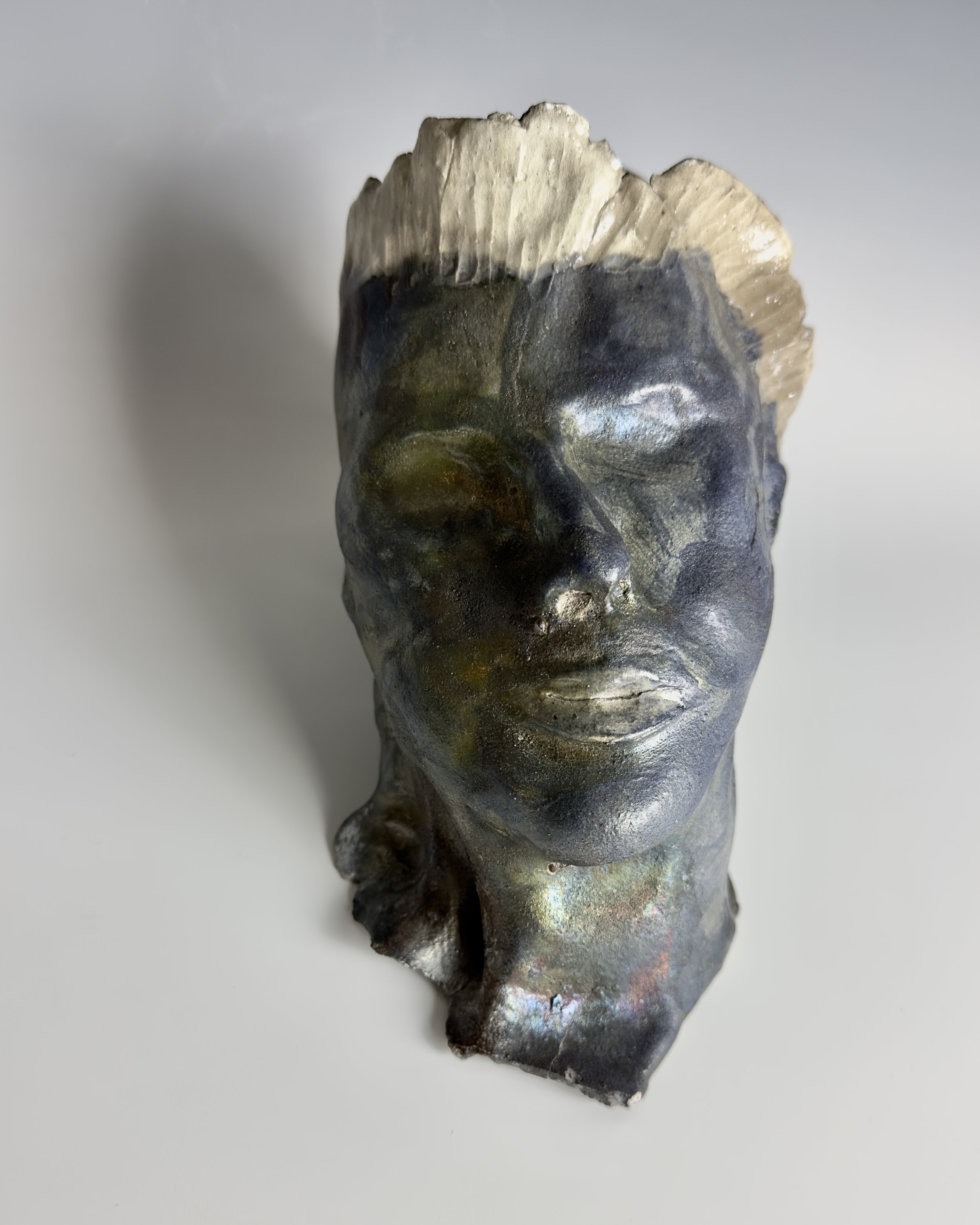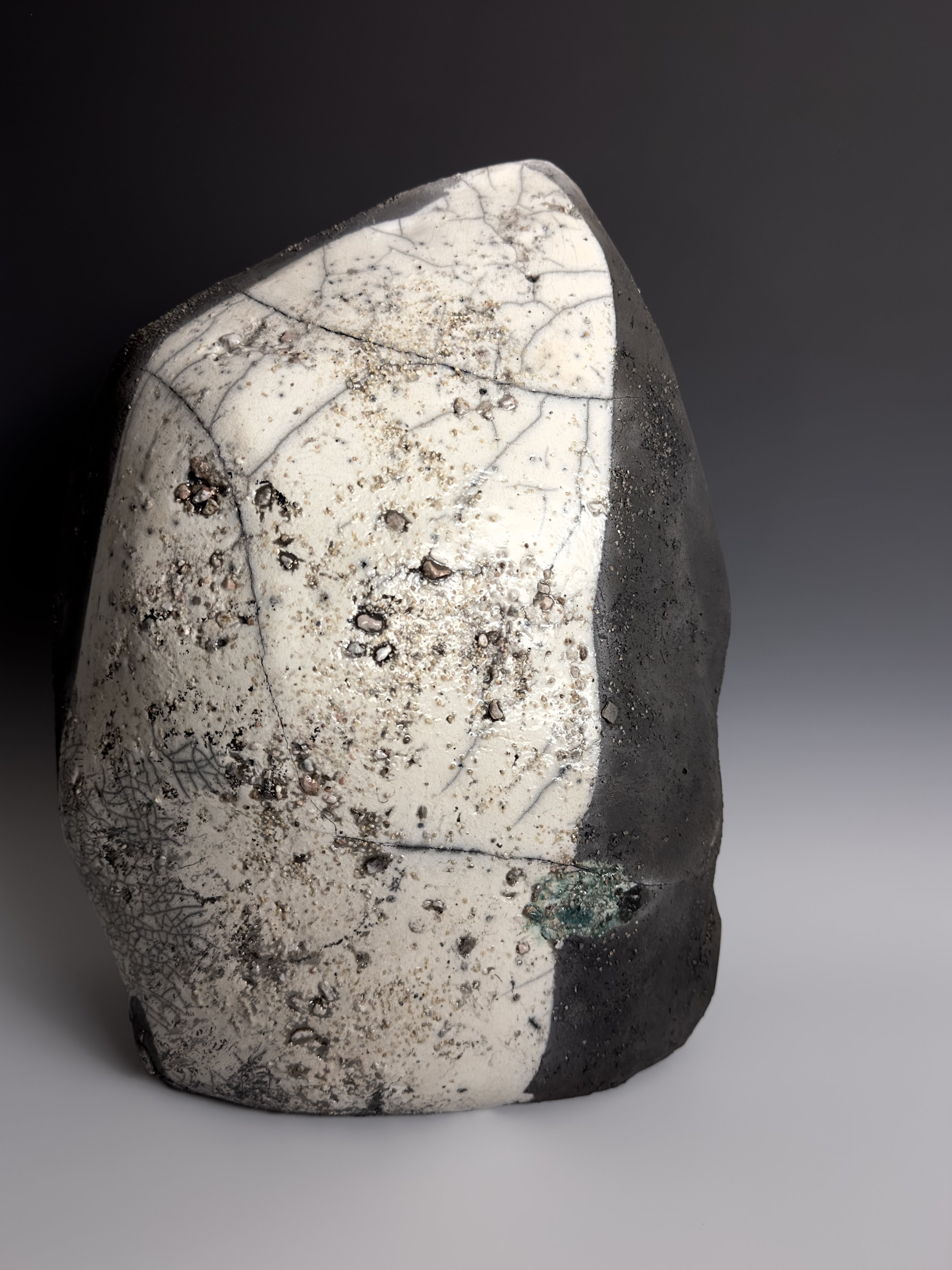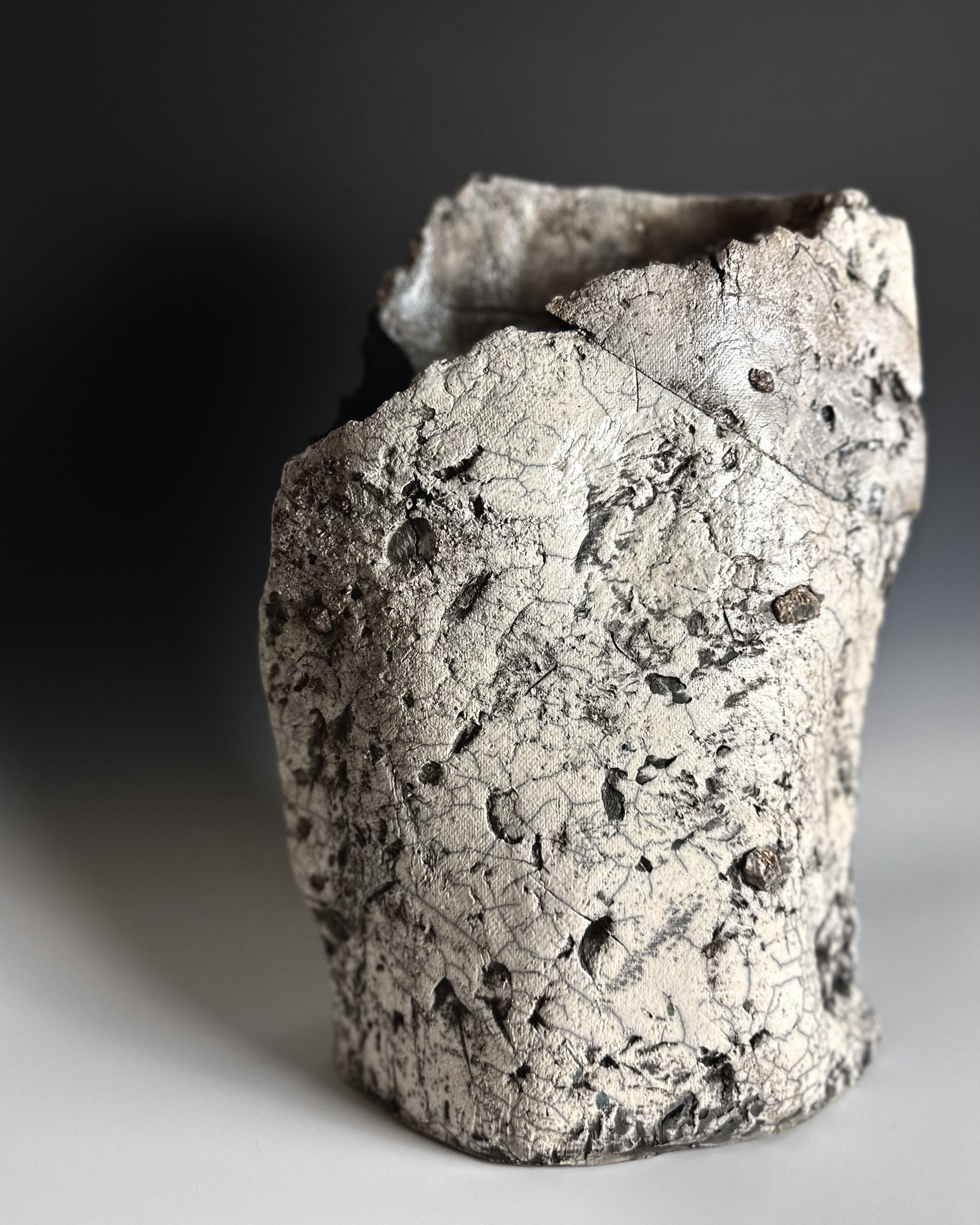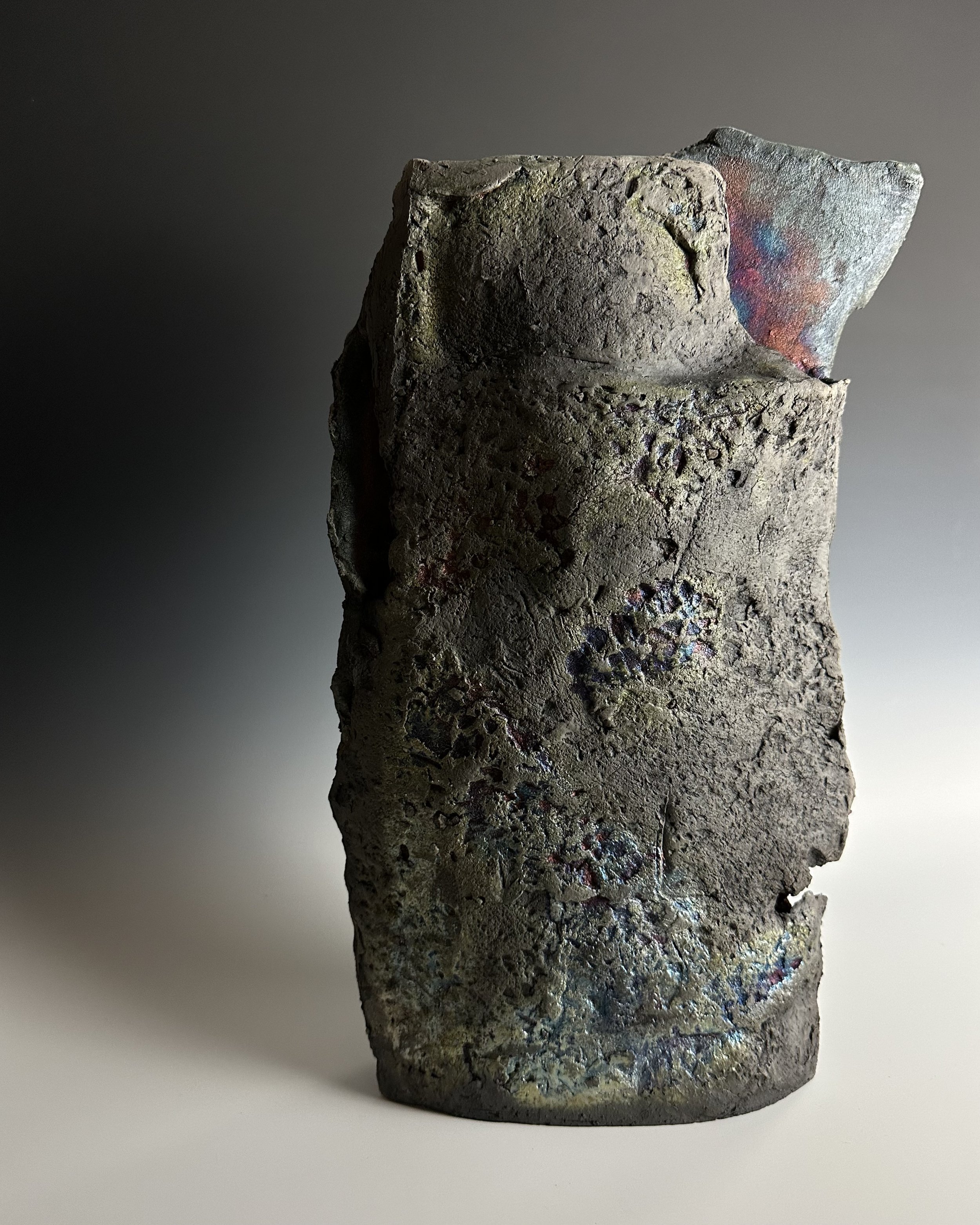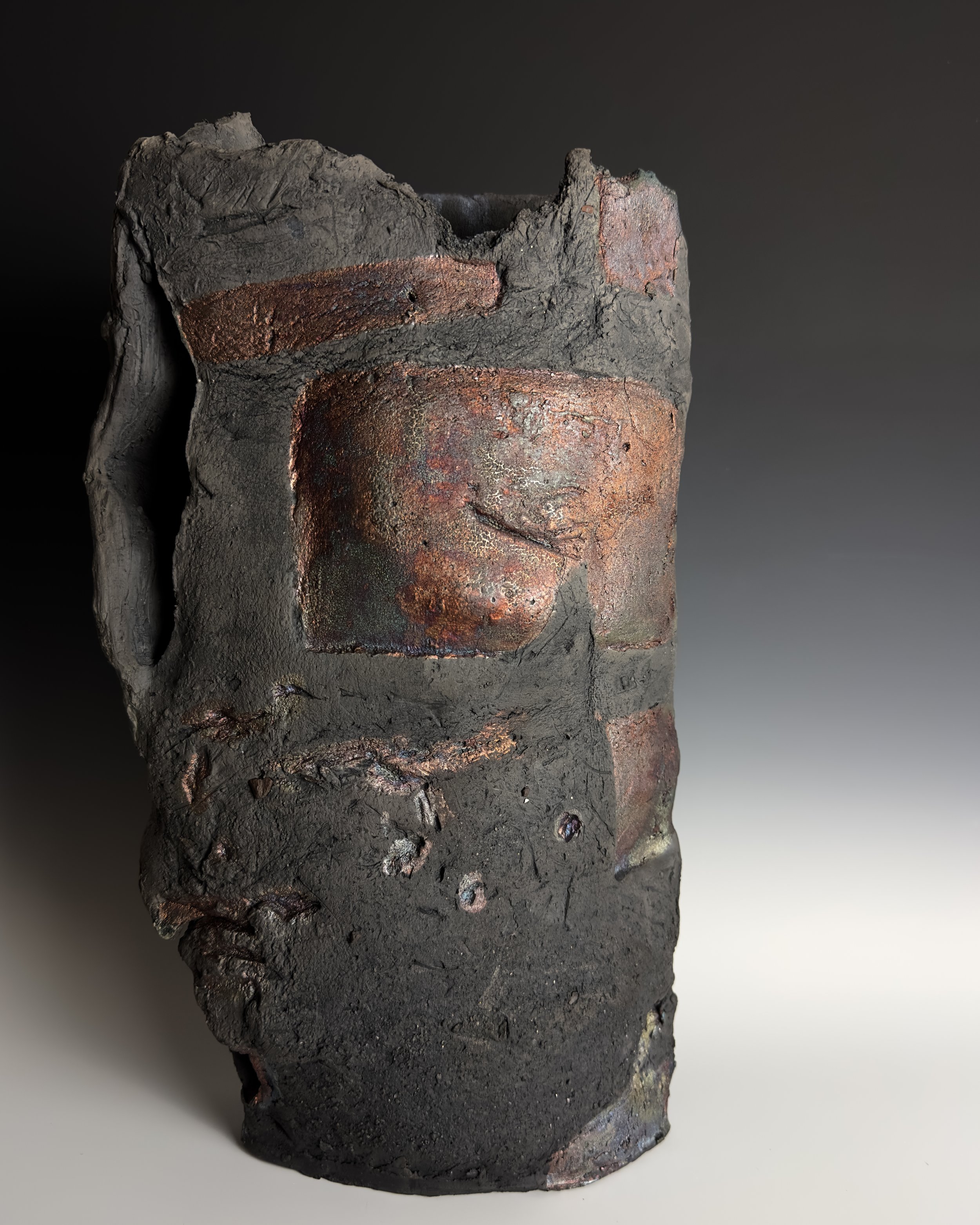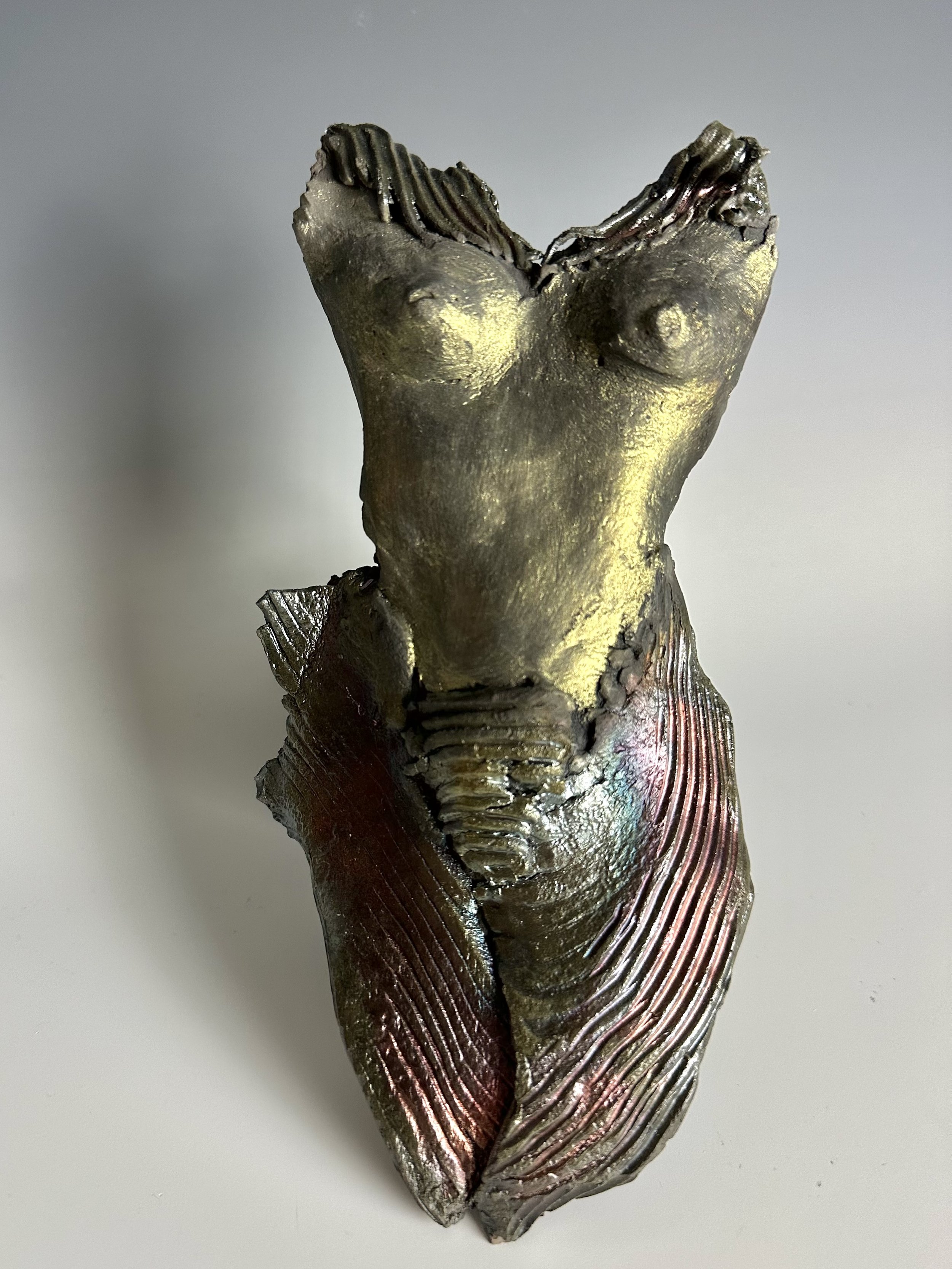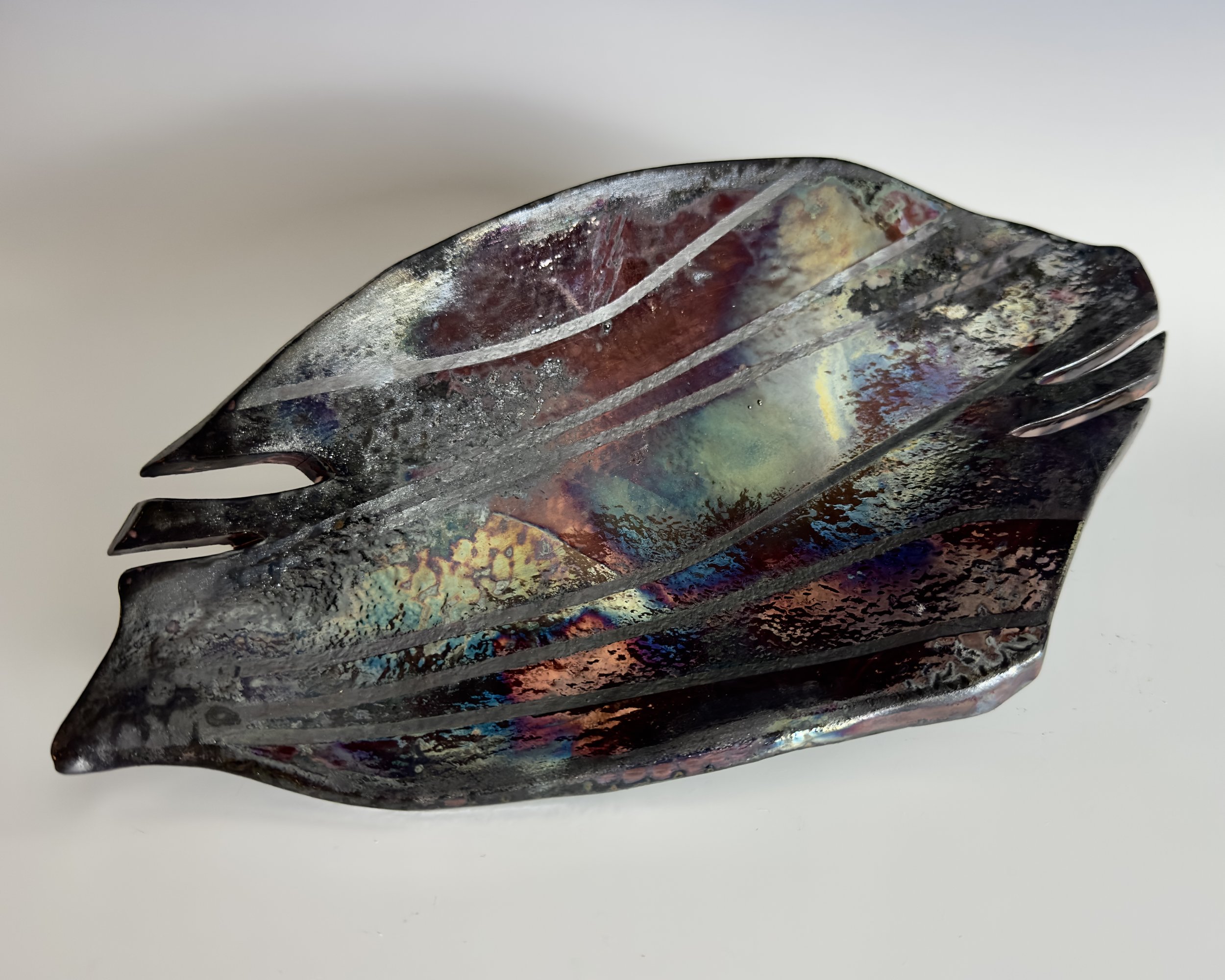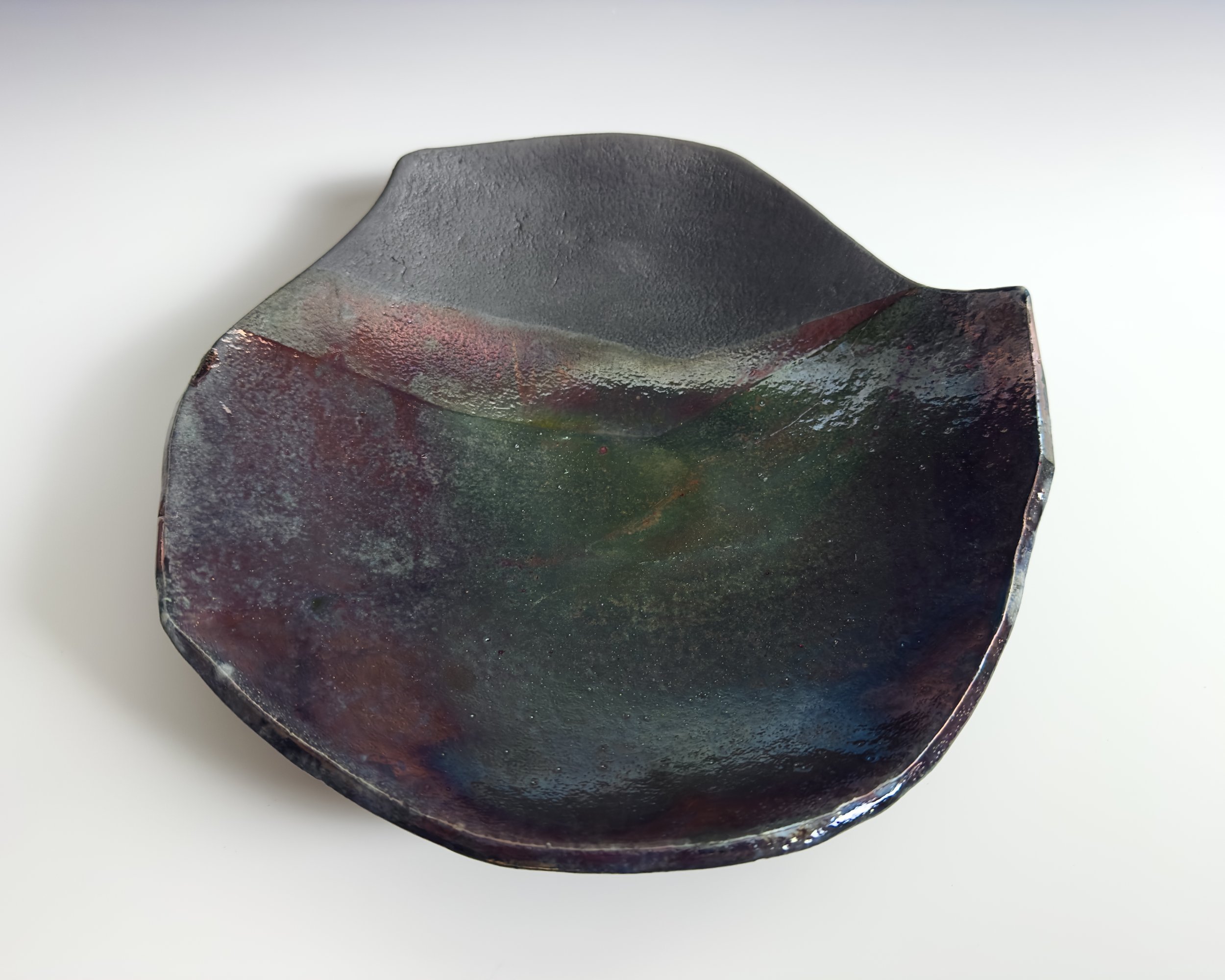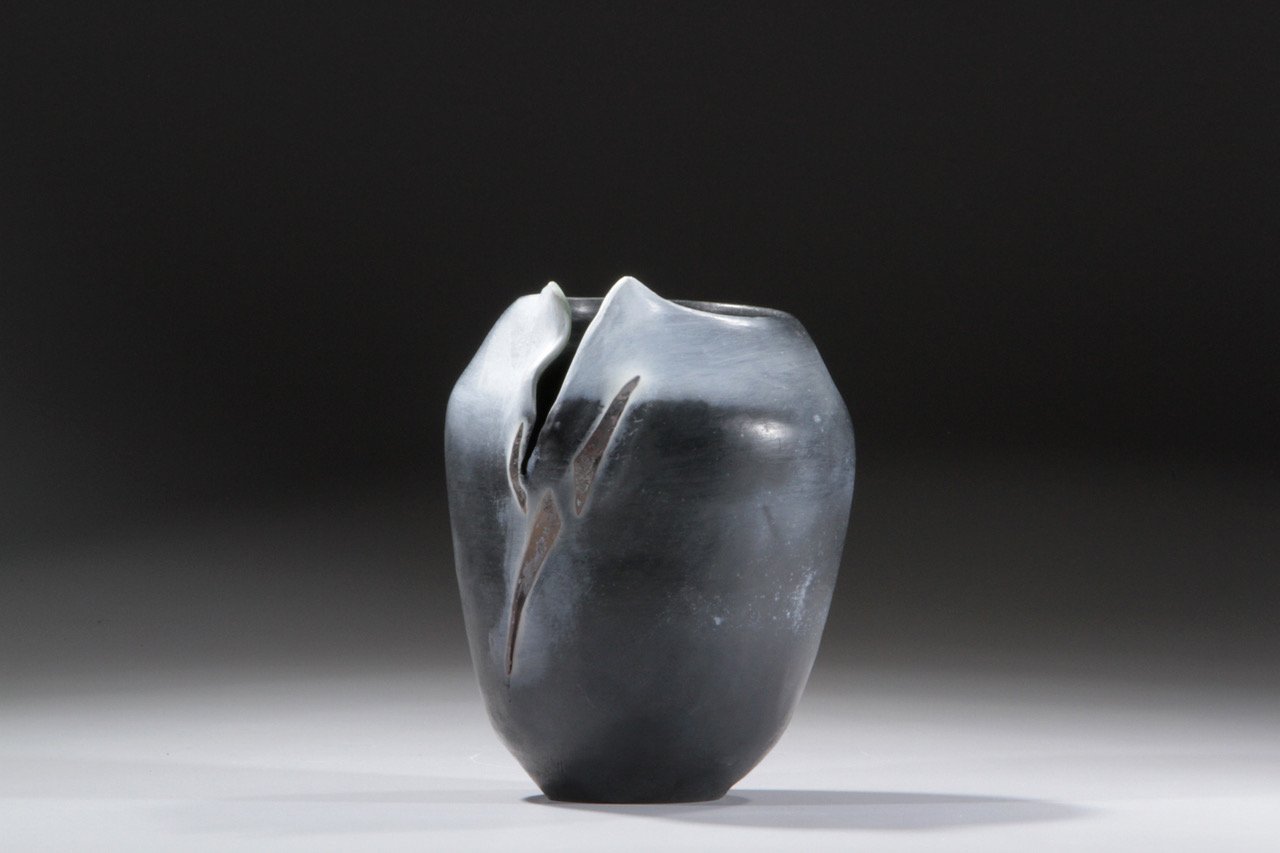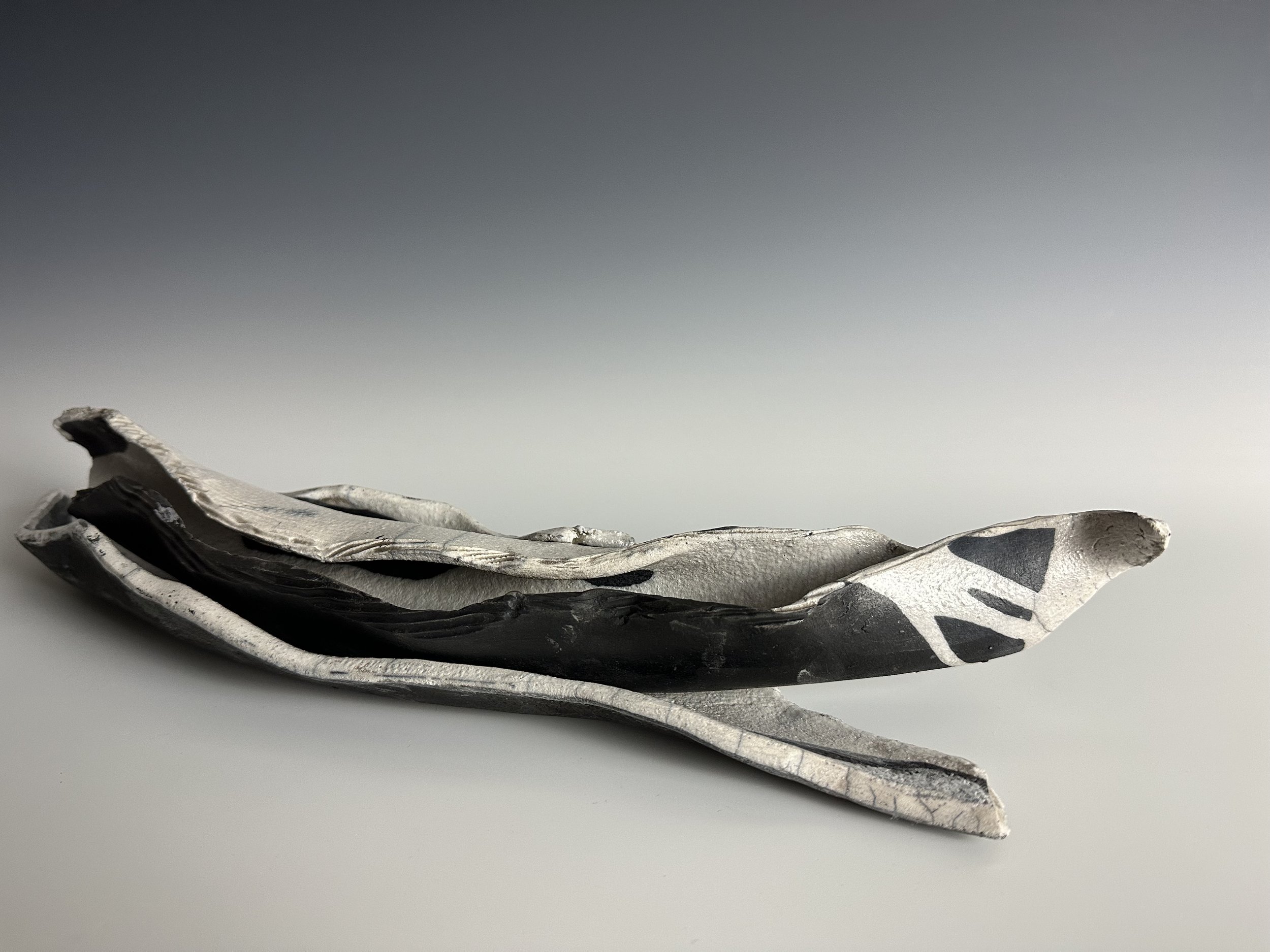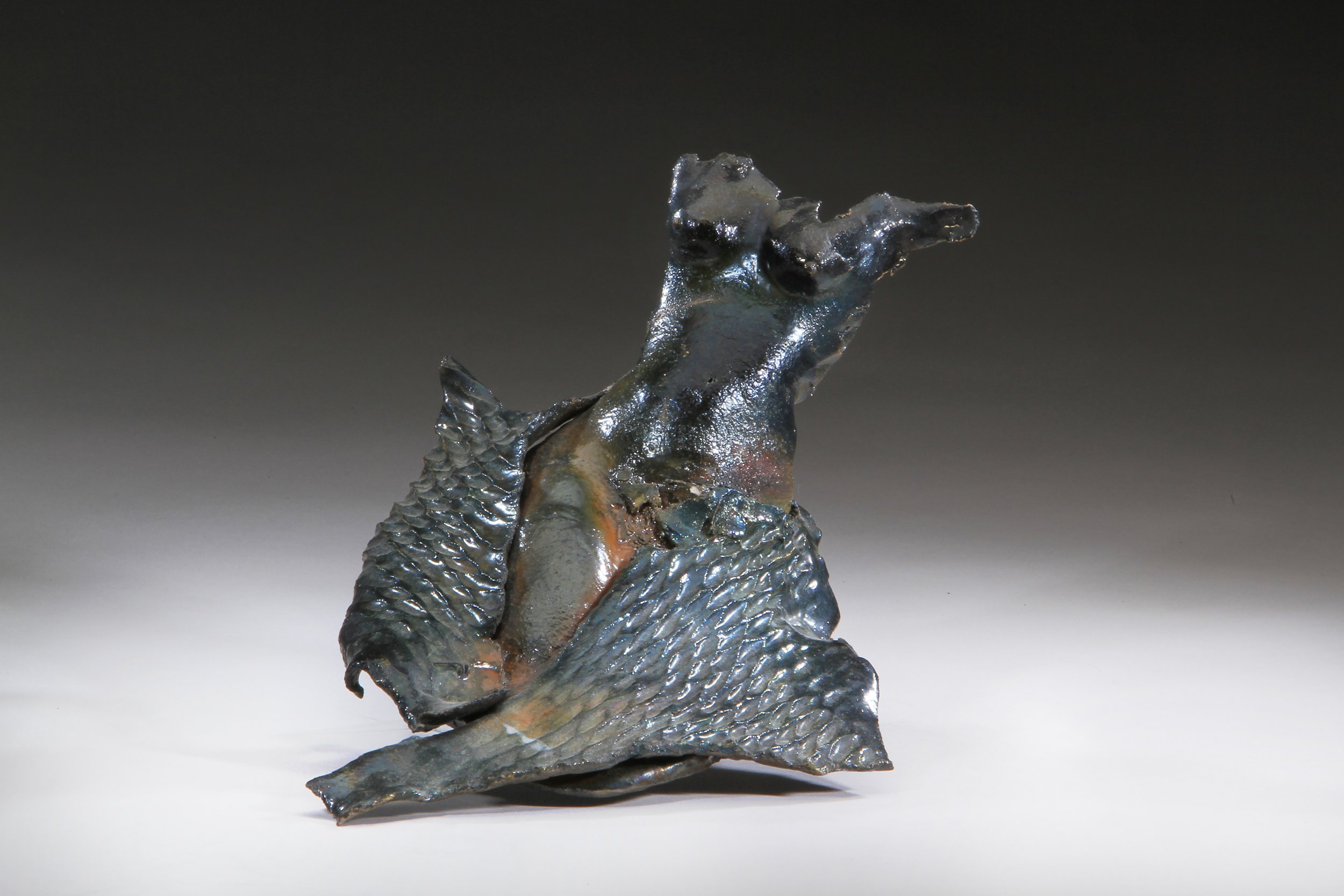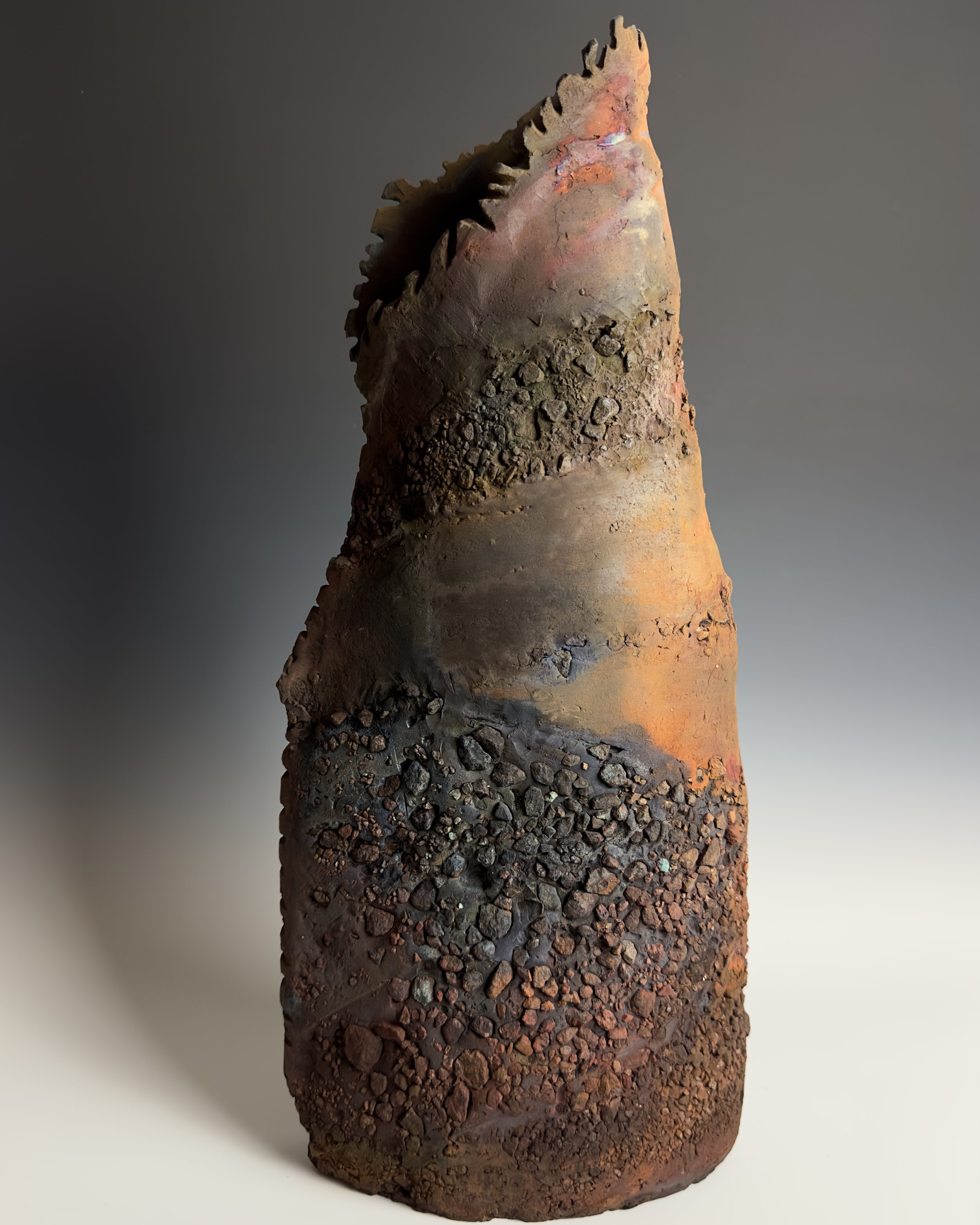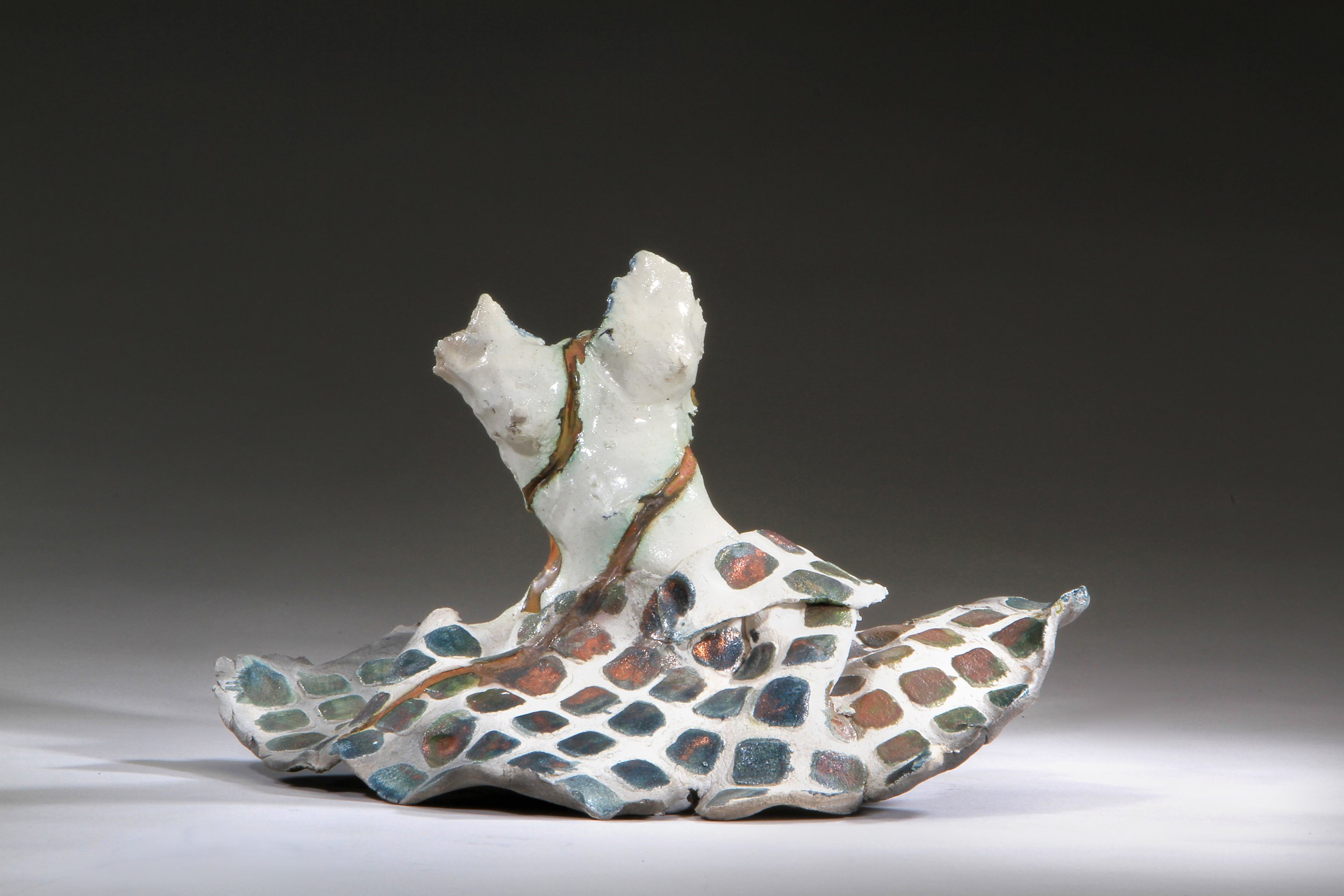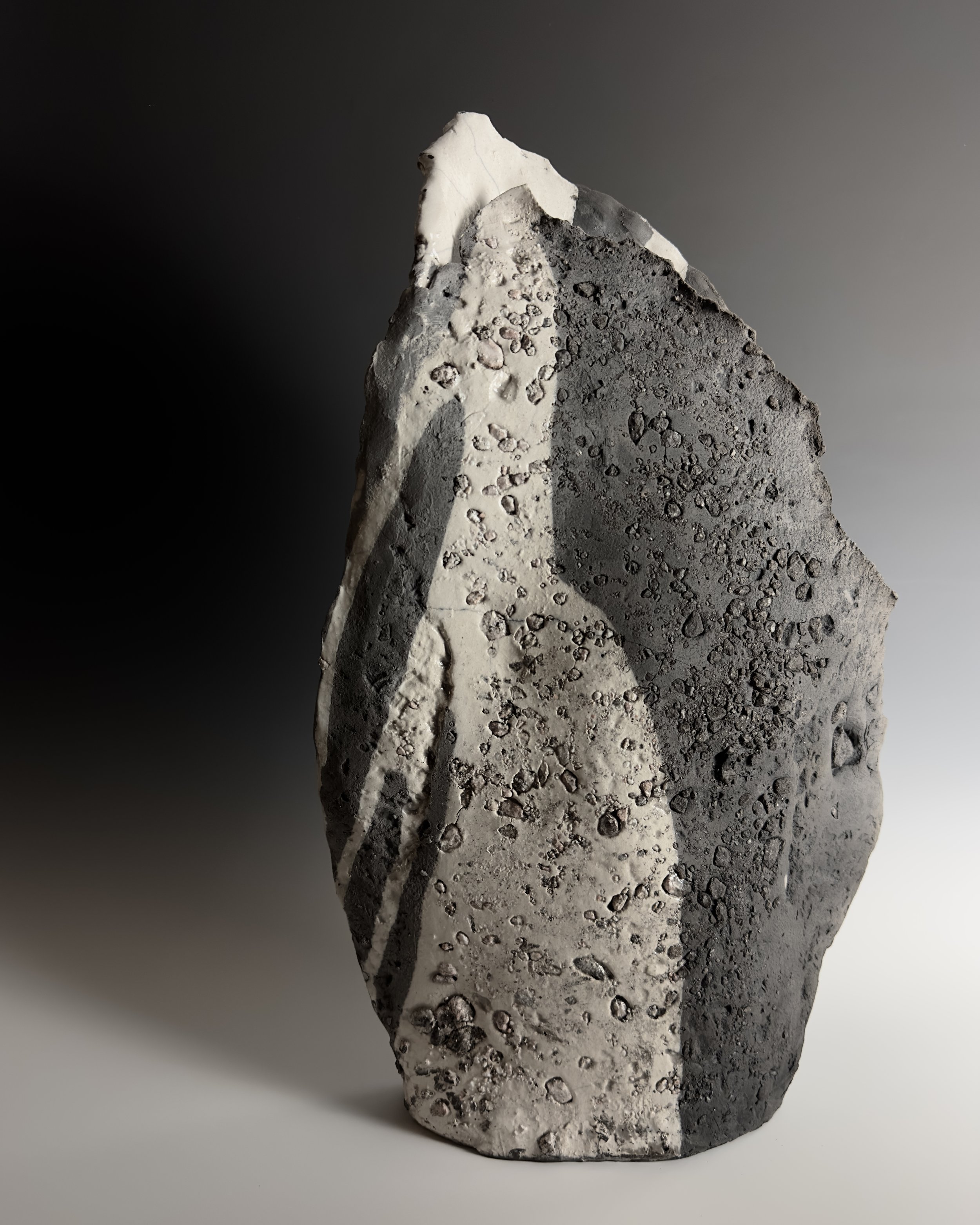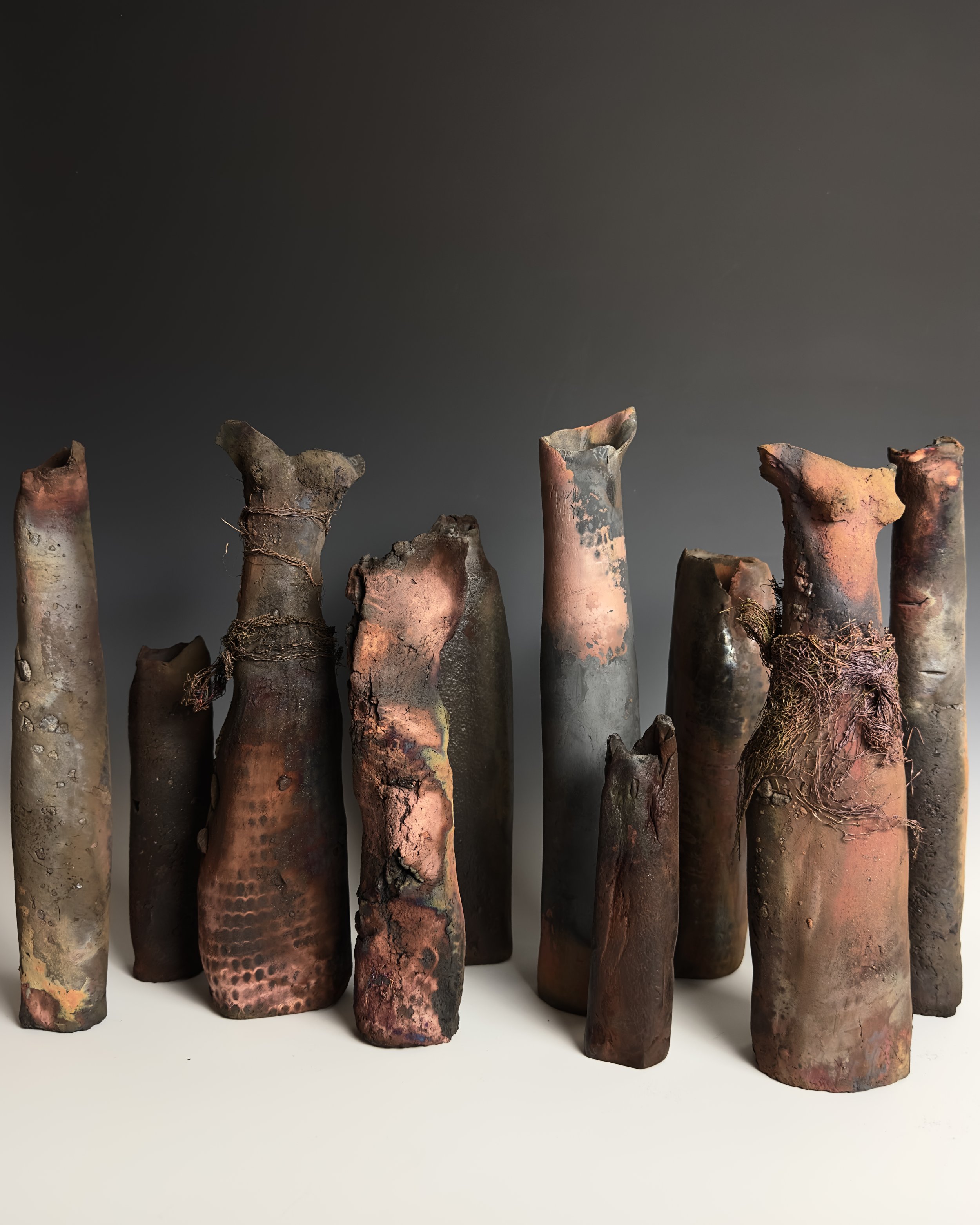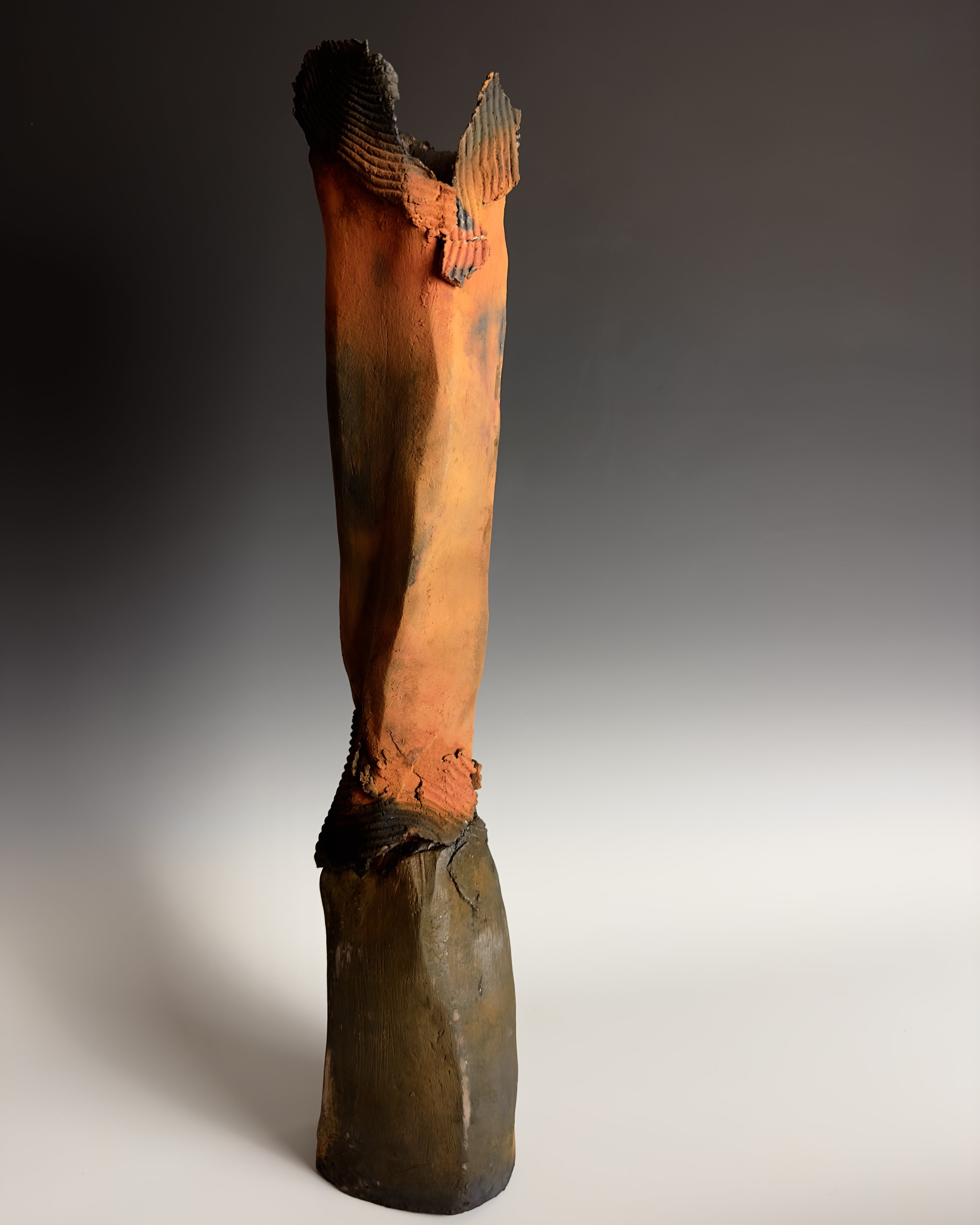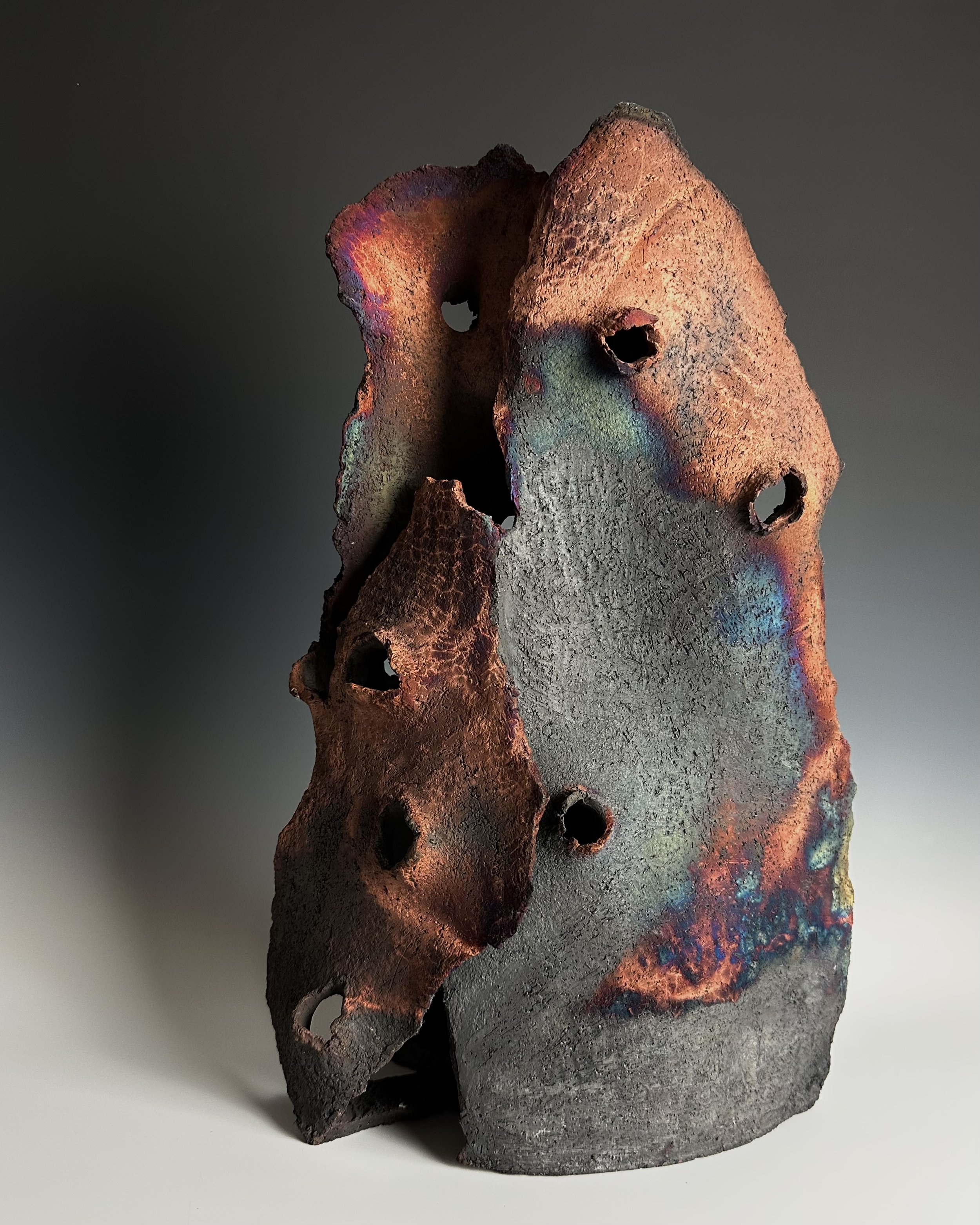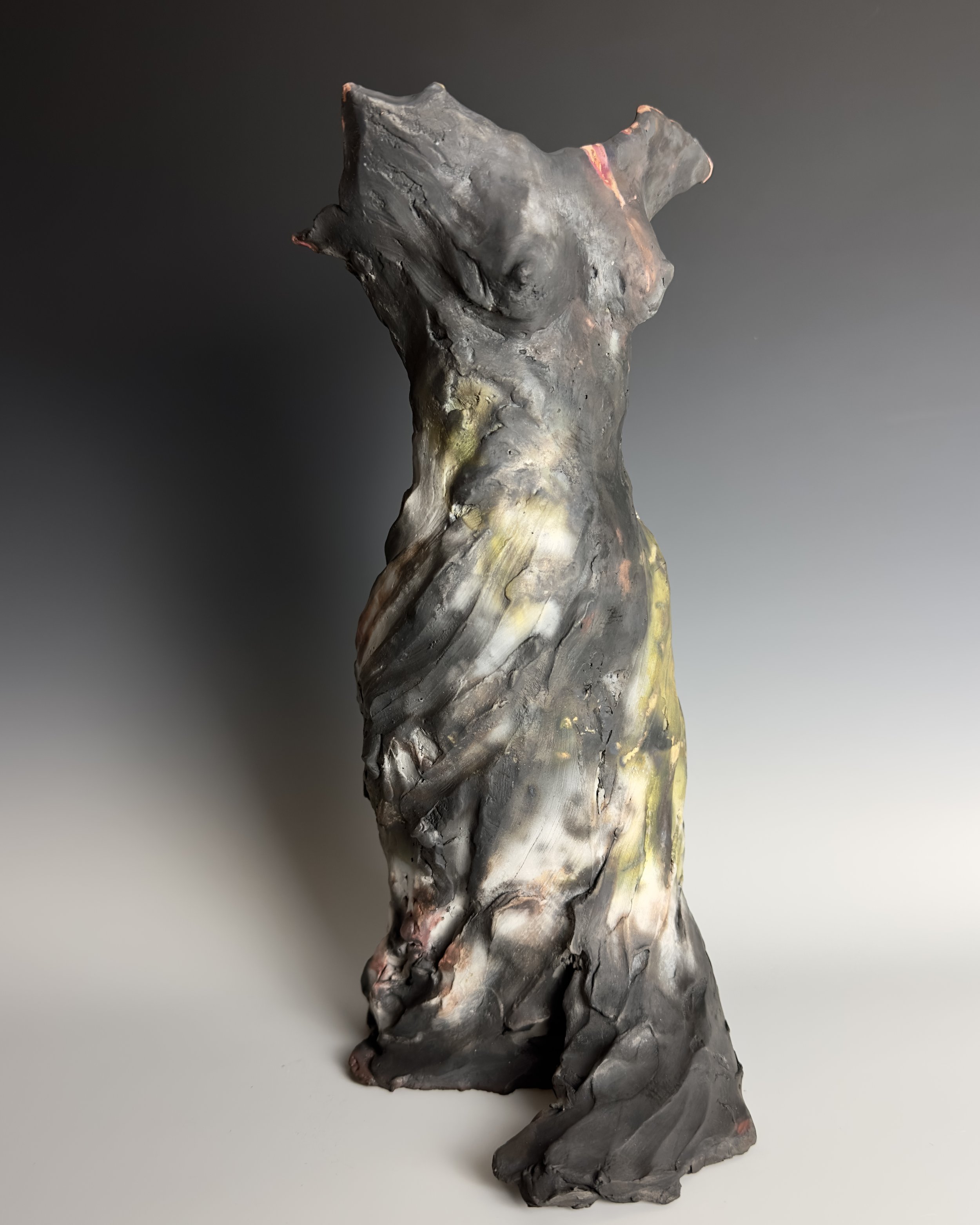Newburyport Art presents NAA Master Artist Nancy S. Cahan in a featured solo exhibition — Out of the Fire: Expressions in Clay. Nancy writes of her exhibition:
“This exhibition includes some of my favorite pieces from years past, and current work. It is an expression of female sensuality, connection and loss, a search for beauty during the pandemic, politics, and simply pieces that feel right and make me happy. All (but one) came out of the intense heat, fire, smoke, and fuming used in raku and saggar firing. The results are beautiful and often unpredictable.”
-
A Master Artist member of Newburyport Art and juried member of the New England Sculptors Association, Nancy S. Cahan has exhibited her work extensively throughout New England for the past 25 years, receiving several awards for sculpture/fine craft. She holds an undergraduate degree in Psychology with a minor in Art, alongside a Master’s degree in Expressive Art Therapy and a Doctorate in Clinical Psychology. Please visit Nancy’s website — nancycahan.weebly.com — for more examples of her work.
-
The natural world, and complexity of being human inspire my creativity. For the past 40 years, clay has been the most rewarding medium to work with. It is tactile, 3-dimensional, forgiving, and exacting. Like a living thing, it stretches, shrinks, and can easily break. It responds fully to my intent, but teaches me to be patient and respectful.
When I hold a ball of clay in my hand, I often have a preconceived idea of what I want to create. My intention might be to create something I find visually beautiful, or a conceptual piece that captures particular thoughts and feelings. I tune in to intention, but ultimately what is rendered is often a surprise. There’s a space between intention and something deeper that fuels my inspiration and creativity.
Although some of my pieces are symmetrical, I am most drawn to creating rough-edged sculptural forms that may seem unfinished. This way of seeing dovetails with my work as a psychologist, as I believe we need to soften and integrate our rough edges, not get rid of them.
I am most drawn to Raku and Saggar firing. It is an exciting process that creates beautiful and unusual effects, involving intense heat, fire, smoke, and fuming. The results are often unpredictable, require effort, and letting go.
-
Raku is a Japanese firing technique which produces unusual, and often unpredictable results. Bisque-fired pieces are glazed, rapidly fired, and removed from the outdoor kiln when glowing hot. The pieces are placed in metal cans with combustible materials (strips of paper or sawdust), and covered. This “reduction” impacts the glaze, producing colors, textures, and metallic effects. In white crackle glazes, the carbon seeps into the cracks, creating black crackle effects. Unglazed areas turn varying shades of black, depending on the amount of carbon produced from the reduction.
Raku-firing is an exciting process which requires control, experimentation, and “letting go”, as the results of each piece cannot be predicted. Heat, fire, smoke, and water are all part of the process, as well as team-work. Often a person will “pull” a glowing raku-piece from the kiln with tongs, while another will throw combustible materials onto the piece after it has been placed in the can. The materials will combust, fire and smoke billowing, before the lid is placed back on the can. Once the pieces have cooled, the pieces are “found” amongst the burnt paper and sawdust.
Because of the clay body used and rapid firing technique, raku pieces are less functional and more fragile than higher firing methods. They are not meant to hold water well, and it is not recommended to serve food on raku bowls or platters, except for dry foods.
-
Saggar-firing is a method of fuming a ceramic piece in a container. A ceramic box, aluminum foil, or slabs of raw clay, can all be used as containers. The process starts with a piece that is brushed with terra sigillata (a formulated thin slip that is applied to a leather-hard or dry clay piece, to give it a shiny surface, which is then burnished to create even more sheen). Pieces of copper can be laid upon the piece before the bisque firing, if strong black shapes are desired. After this first firing, sulfites or oxides can be placed in the saggar for color, either directly on the clay slab, or infused into hay and/or sawdust, which surrounds the piece. Salt, or any natural combustibles (coffee grinds! seaweed!, etc.) can be added for different effects. When using clay slabs as a saggar, copper mesh encloses it all, not only to keep it intact during the firing, but to add to the fuming process. When using a clay container, the saggar is placed in a kiln for several hours at low fire (or can be rapidly fired in a raku-kiln). Regardless of approach, the combustibles mixing with the oxides and sulfates fume, creating unpredictable results of great beauty. Wax can be applied as a final step for added sheen. These saggar pieces are decorative, and not meant to hold liquid, or to be eaten off of.
Be sure to visit during the public Opening Reception, Saturday, November 4th (5-7pm). It’s the perfect time to meet Nancy and learn more about these incredible works. The reception is free and open to the public with light refreshments provided!

